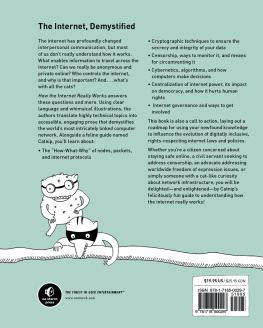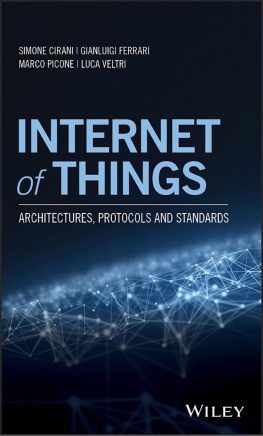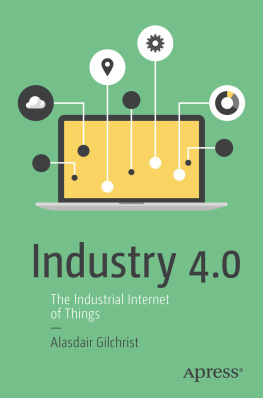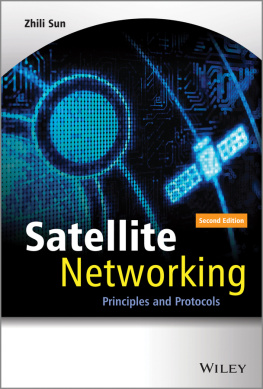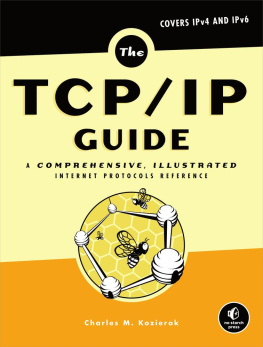Copyright 2012 by John Wiley & Sons, Inc. All rights reserved
Published by John Wiley & Sons, Inc., Hoboken, New Jersey Published simultaneously in Canada
No part of this publication may be reproduced, stored in a retrieval system, or transmitted in any form or by any means, electronic, mechanical, photocopying, recording, scanning, or otherwise, except as permitted under Section 107 or 108 of the 1976 United States Copyright Act, without either the prior written permission of the Publisher, or authorization through payment of the appropriate per-copy fee to the Copyright Clearance Center, Inc., 222 Rosewood Drive, Danvers, MA 01923, (978) 750-8400, fax (978) 750-4470, or on the web at www.copyright.com . Requests to the Publisher for permission should be addressed to the Permissions Department, JohnWiley & Sons, Inc., 111 River Street, Hoboken, NJ 07030, (201) 748-6011, fax (201) 748-6008, or online at http://www.wiley.com/go/permission .
Limit of Liability/Disclaimer of Warranty: While the publisher and author have used their best efforts in preparing this book, they make no representations or warranties with respect to the accuracy or completeness of the contents of this book and specifically disclaim any implied warranties of merchantability or fitness for a particular purpose. No warranty may be created or extended by sales representatives or written sales materials. The advice and strategies contained herein may not be suitable for your situation. You should consult with a professional where appropriate. Neither the publisher nor author shall be liable for any loss of profit or any other commercial damages, including but not limited to special, incidental, consequential, or other damages.
For general information on our other products and services or for technical support, please contact our Customer Care Department within the United States at (800) 762-2974, outside the United States at (317) 572-3993 or fax (317) 572-4002.
Wiley also publishes its books in a variety of electronic formats. Some content that appears in print may not be available in electronic formats. For more information about Wiley products, visit our web site at www.wiley.com .
Library of Congress Cataloging-in-Publication Data:
Oki, Eiji, 1969
Advanced Internet protocols, services, and applications / Eiji Oki, Roberto Rojas-Cessa, Mallikarjun Tatipamula, and Christian Vogt.
pages cm
Includes bibliographical references and index.
ISBN 978-0-470-49903-0
1. Computer network protocols. I. Rojas-Cessa, Roberto. II. Tatipamula, Mallikarjun. III. Vogt, Christian (Marketing executive) IV. Title.
TK5105.55.O54 2012
004.6-dc23
2011048524
Preface
Today, the Internet and computer networking are essential to business, learning, personal communication, and entertainment. The infrastructure that carries virtually all messages and transactions sent over the Internet is based on advanced Internet protocols. These advanced Internet protocols ensure that both public and private networks operate with maximum performance, security, and flexibility.
This book is intended to provide a comprehensive technical overview and survey of advanced Internet protocols. First, a solid introduction and discussion of internetworking technologies, architectures, and protocols is provided. The book also presents the application of these concepts into next-generation networks and discusses protection and restoration as well as various tunneling protocols and applications. Finally, emerging topics are discussed.
This book covers basic concepts in Transmission Control Protocol (TCP)/Internet Protocol (IP), Internet architecture, IP routing protocols including transport-layer protocols, IP version 6, Multiprotocol Label Switching (MPLS), networking services such as IP Quality of Service (QoS), IP Multicast, anycast, Layer-2 and Layer-3 virtual private networks (L2VPN and L3VPN), and applications such as IP over Dense Wavelength Division Multiplexing (DWDM), IP traffic engineering, IP in mobility, and IP network security.
Although there are no strict prerequisites for reading this book, a data communication background would be helpful. All the concepts in this book are developed from basics on an intuitive basis, with further insight provided through examples of real-world networks, services, and applications. The authors are well-experienced researchers and engineers from both industry and academia.
Dr. Mallikarjun Tatipamula first offered a course on Advanced Internet Protocols to graduate students at a number of leading universities in addition to tutorials at various conferences. The positive response from students xi triggered the idea of writing this book with the objective of setting a strong foundation for students regarding Internet protocols.
The authors have developed some of the contents of this book in their graduate courses and seminars in their universities and organizations. These contents have been improved, thanks to feedback from students and industry colleagues. The courses in which this material has been used have attracted both academic and industrial practitioners, as the Internet and computer networking are key topics in the information technology industry. These are people interested in the principles of the Internet and advanced networking technologies, including designing networks and network elements and being able to consult network designers in order to satisfy their customers' needs.
Audience
This book is intended for graduate students, R&D managers, software and hardware engineers, system engineers, and telecommunications and networking professionals. This book will interest those who are currently active or anticipate future involvement in internetworking and are seeking a broad understanding and comprehensive technical overview of Internet technologies, architectures, and protocols including current status and future direction.
Organization
The book is organized as follows.
- Chapter 1 describes Transmission Control Protocol (TCP)/Internet Protocol (IP), which is an Internet protocol stack that enables communications between two computers, or hosts, through the Internet. It is a collection of different protocols. A protocol is a set of rules that controls the way data is sent between hosts.
- Chapter 2 explains protocols in the transport layer, which is the fourth layer of the Open Systems Interconnection (OSI) reference model. Transparent transfer of data between end users using services of the network layer is provided. The well-known protocols in this layer are TCP, User Datagram Protocol (UDP), Stream Control Transmission Protocol (SCTP), and Real-time Transport Protocol (RTP).
- Chapter 3 describes Internet architecture, including basic Internet topology, Internet exchange points (IXPs), the history of IXPs, and the principles of Internet relationships and Internet service providers (ISPs).
- Chapter 4 describes IP routing protocol including an overview of Interior Gateway Protocols (IGPs) and Exterior Gateway Protocols (EGPs). Routing Information Protocol (RIP) and Open Shortest Path First (OSPF) is covered as an IGP, and Boarder Gateway Protocol (BGP) is covered as an EGP.
- Chapter 5 describes Multiprotocol Label Switching (MPLS) technologies, which enable networks to perform traffic engineering, resident communications, virtual private networks, Ethernet emulation, and so on. First, an overview to MPLS is given. Next, the functions and mechanisms of MPLS are described. Finally, MPLS applicabilities are discussed.
- Chapter 6 presents a myriad of concepts and paradigms used to provision quality of service by the Internet. It includes discussions on the implementation of mechanisms of traffic differentiators and policy and traffic policers and regulators. The discussion includes Diffserv, IntServ, and a combination of both as developed by recent research.



